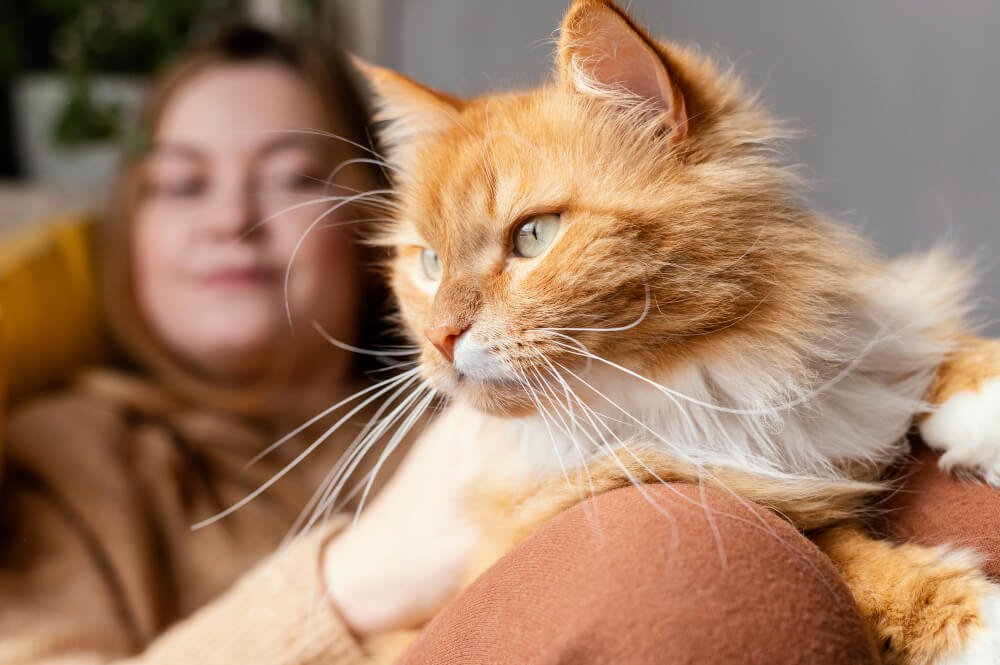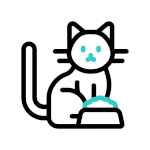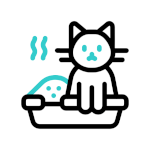Hairballs are a common issue for many cat owners, causing discomfort for both cats and their human companions. Managing hairballs properly is essential for your cat’s health and well-being. In this article, we’ll explore effective methods to prevent and treat hairballs, as well as products that can help keep your cat comfortable and hairball-free.
1. Understanding Hairballs
Hairballs, also known as trichobezoars, are clumps of fur that cats ingest while grooming themselves. Although they’re common, they can sometimes lead to complications, particularly if the hairballs become too large or frequent.
2. What Causes Hairballs?

Hairballs occur because of cats’ natural grooming habits. As they clean themselves, their rough tongues catch loose fur, which is then swallowed. For most cats, this fur passes through the digestive tract without issue, but in some cases, it accumulates and forms a hairball.
3. Signs and Symptoms of Hairballs
Recognizing hairball symptoms can help you take timely action. Here are a few signs that your cat might be dealing with hairballs:
- Frequent coughing or retching without vomiting
- Loss of appetite or changes in eating behavior
- Lethargy or decreased energy
- Digestive issues like constipation
If any of these signs become frequent, it might indicate a more serious issue that requires a veterinarian’s attention.
4. Prevention Methods for Hairballs
Preventing hairballs starts with minimizing the amount of fur your cat ingests. Here are some proven methods for reducing hairball formation.
A. Brushing and Grooming

Regular grooming can reduce the amount of loose fur on your cat, minimizing what they swallow. Using tools specifically designed for cat grooming, like a de-shedding brush, can be very effective.
Suggested Product:
FURminator for CatsThe FURminator is a popular choice for reducing shedding and preventing hairballs. Designed to reach under the topcoat, it effectively removes loose fur, reducing hairball risks.
B. Special Diets
Switching to a hairball control formula can also help. These diets are high in fiber, which can assist the natural movement of fur through the digestive system.
Suggested Product:
Hill’s Science Diet Adult Hairball Control Cat FoodFormulated specifically for hairball control, this cat food can help manage hairballs and promote a healthy coat and digestion.
C. Hydration

Encouraging your cat to drink more water can help with digestion, which may aid in passing fur through their system rather than forming a hairball.
D. Play and Activity

Increasing your cat’s activity level can also aid digestion, preventing hairballs from forming. Physical activity stimulates their digestive tract, helping fur pass through smoothly.
5. Treatment Options for Hairballs
When prevention methods aren’t enough, there are several treatment options for managing hairballs effectively.
A. Hairball Lubricants
Hairball lubricants are gels or pastes that can help fur pass through the digestive tract without clumping. They often contain gentle oils and lubricants safe for cats to consume.
Suggested Product:
Tomlyn Hairball Remedy Gel for CatsThis gel is formulated to help with hairballs and is flavored to appeal to cats, making it easy to administer.
B. Fiber Supplements
Fiber supplements can be mixed into your cat’s food to help bulk up their stool, which can aid in the passage of ingested fur.
Suggested Product:
NaturVet Hairball Aid SupplementThis supplement provides additional fiber, aiding digestion and helping with hairball management.
7. Common Questions About Hairballs
Q1. How often should I groom my cat?
Grooming frequency depends on your cat’s coat type. Long-haired cats benefit from daily grooming, while short-haired cats may only need grooming once or twice a week.
Q2. Is vomiting hairballs normal for cats?
Occasional hairballs are normal, but frequent vomiting can indicate a problem. If your cat vomits hairballs often, consult a veterinarian.
Q3. Can diet alone prevent hairballs?
A hairball-control diet can help but may not eliminate hairballs entirely. Combining diet with regular grooming usually yields the best results.
Q4. Are hairball gels safe for cats?
Yes, most hairball gels are safe when used as directed. Be sure to choose one specifically formulated for cats and follow dosage recommendations.
Q5. How do I know if a hairball is stuck?
Signs like persistent vomiting, lethargy, and a decrease in appetite can suggest a blockage. If you notice these signs, seek veterinary assistance immediately.
Q6. Are hairballs a risk for older cats?
Older cats may have a higher risk of complications from hairballs due to decreased digestive efficiency. Extra care with diet and grooming can help.
8. Conclusion

Hairballs may be an unavoidable part of a cat’s life, but with the right preventive and treatment strategies, you can significantly reduce the discomfort they cause. A combination of regular grooming, a fiber-rich diet, and plenty of hydration will keep your cat’s digestive tract running smoothly. If you’re concerned about your cat’s hairball frequency or they show signs of discomfort, consulting with your veterinarian can provide the right guidance for your pet’s specific needs.



